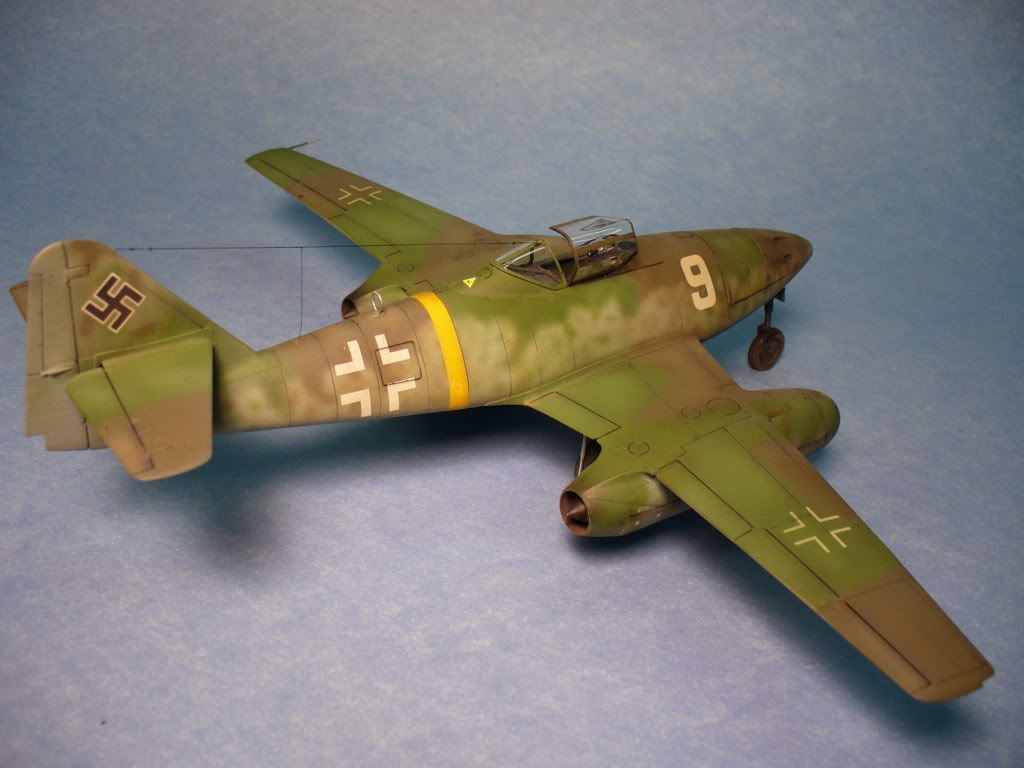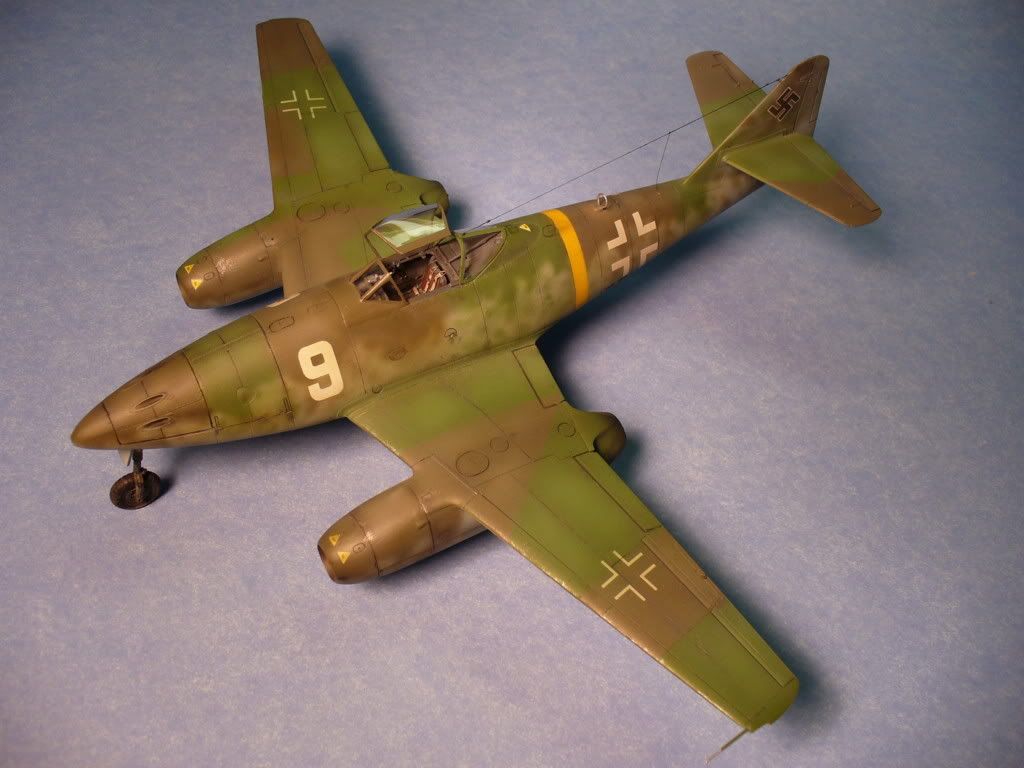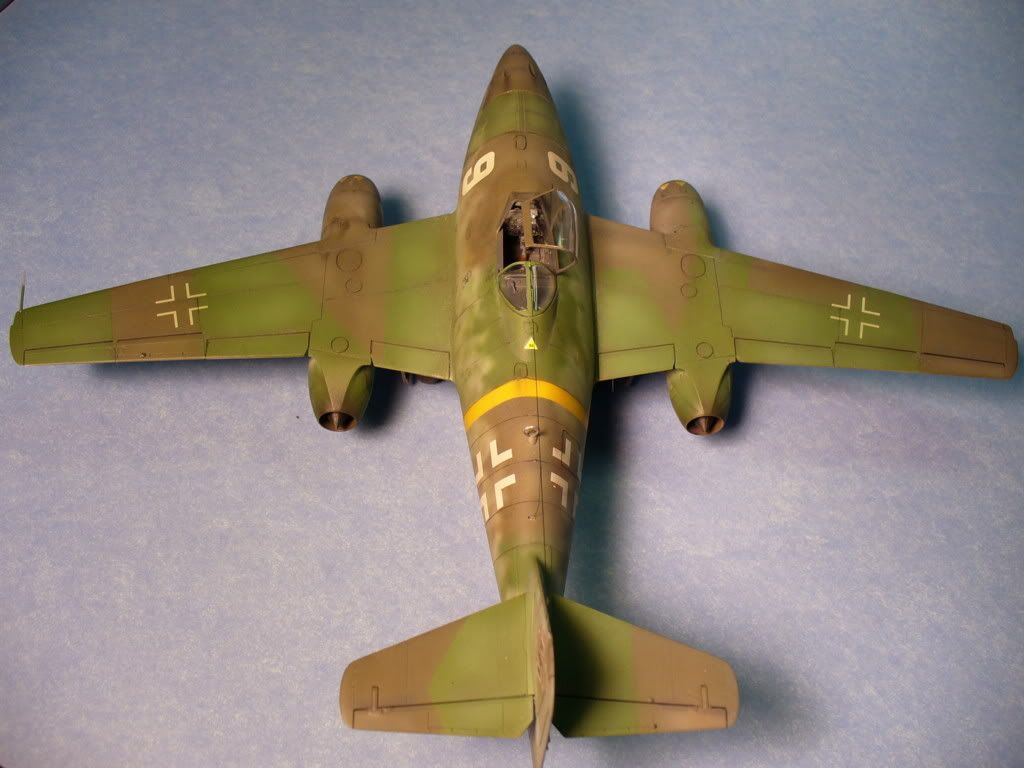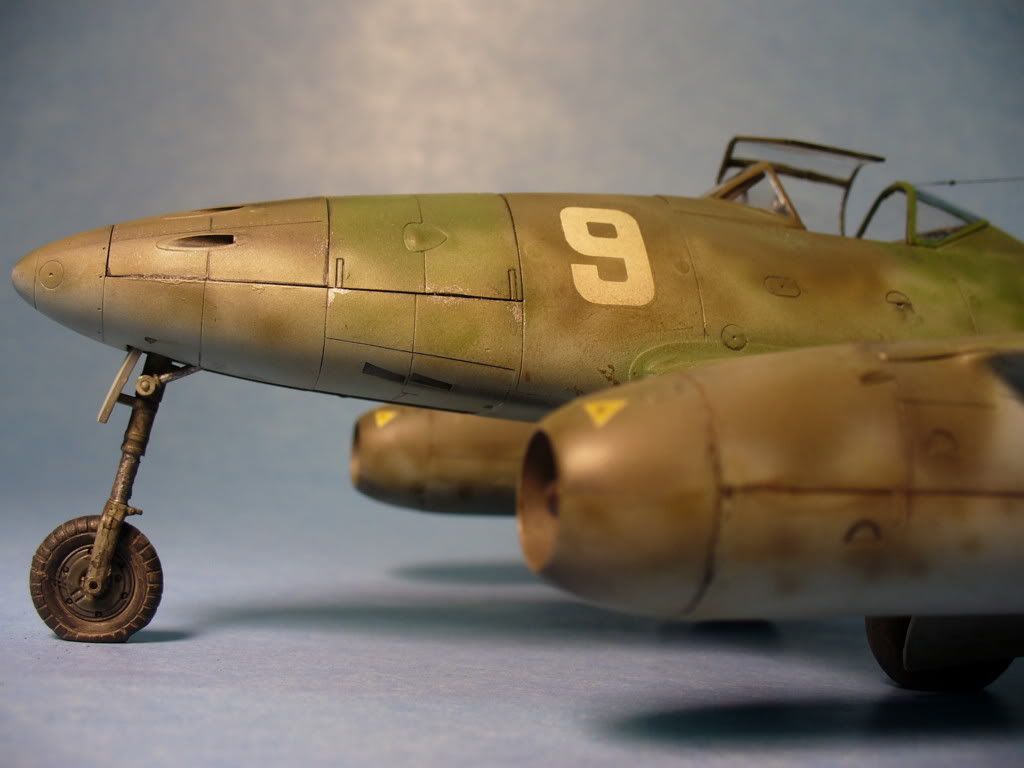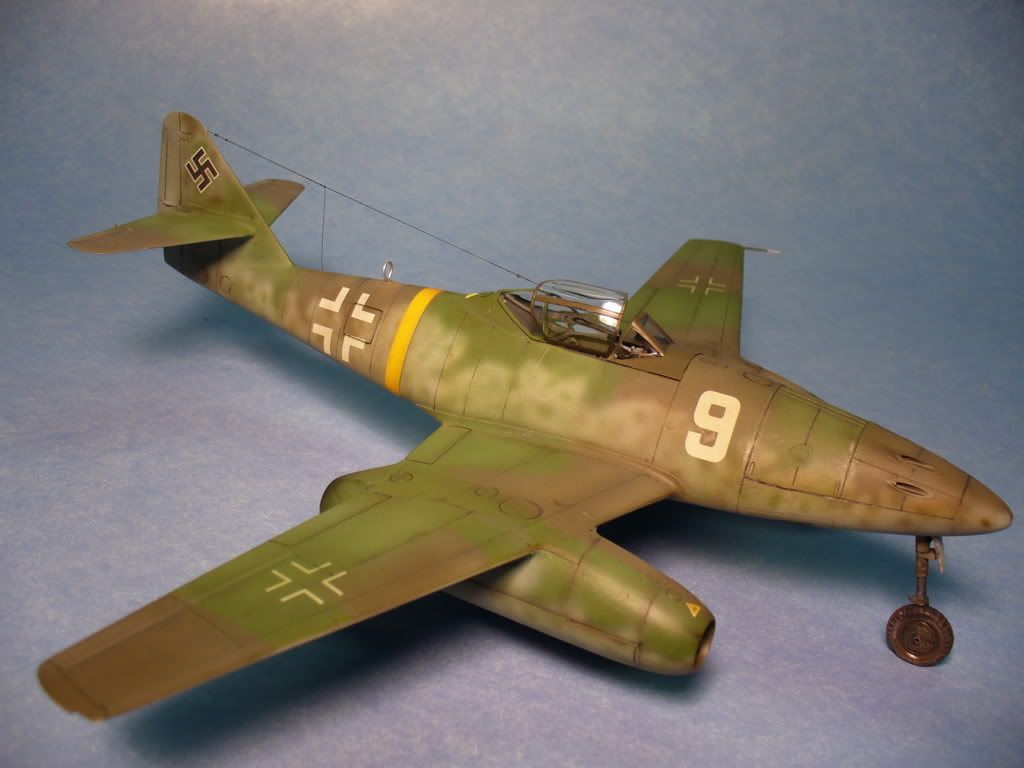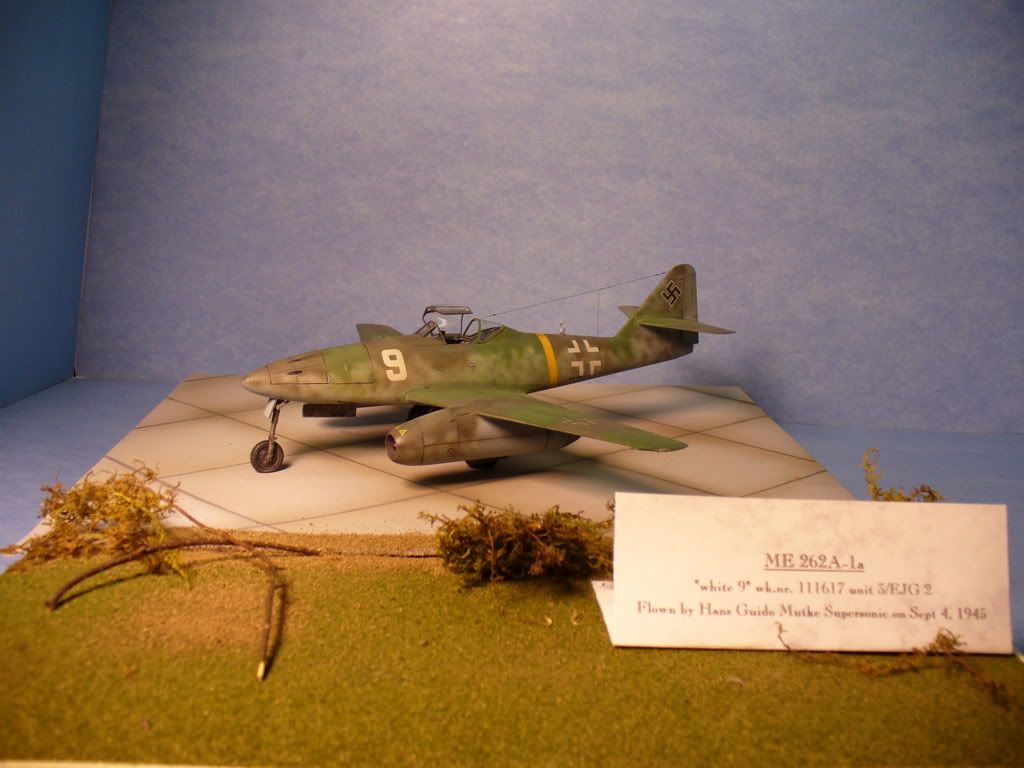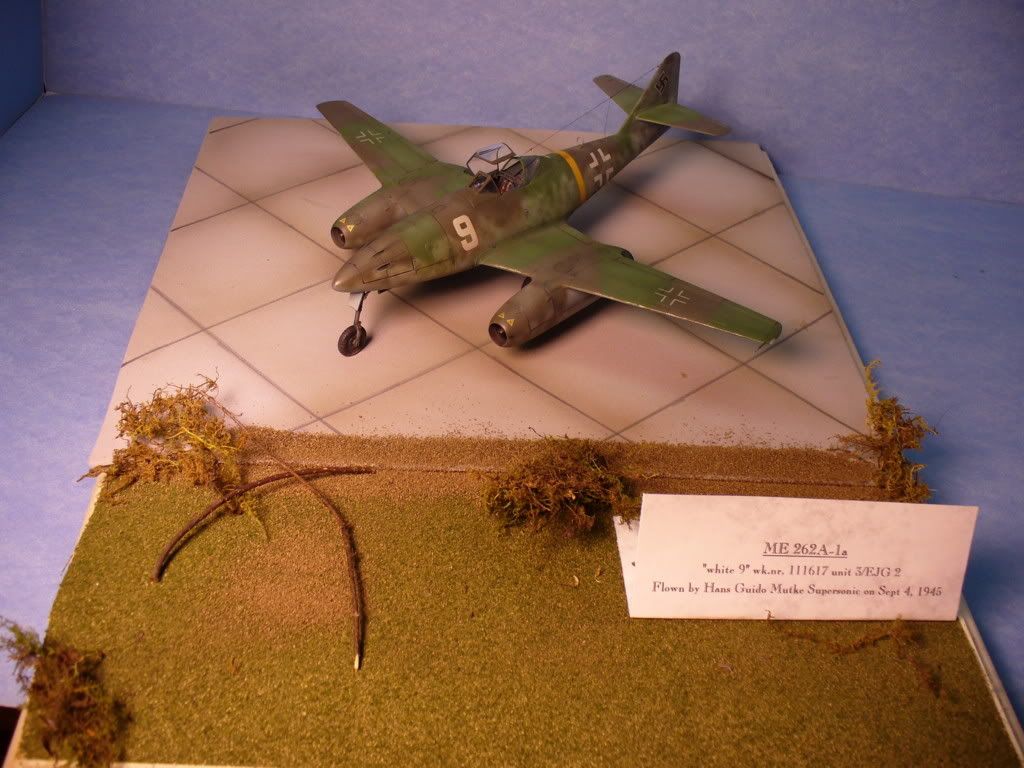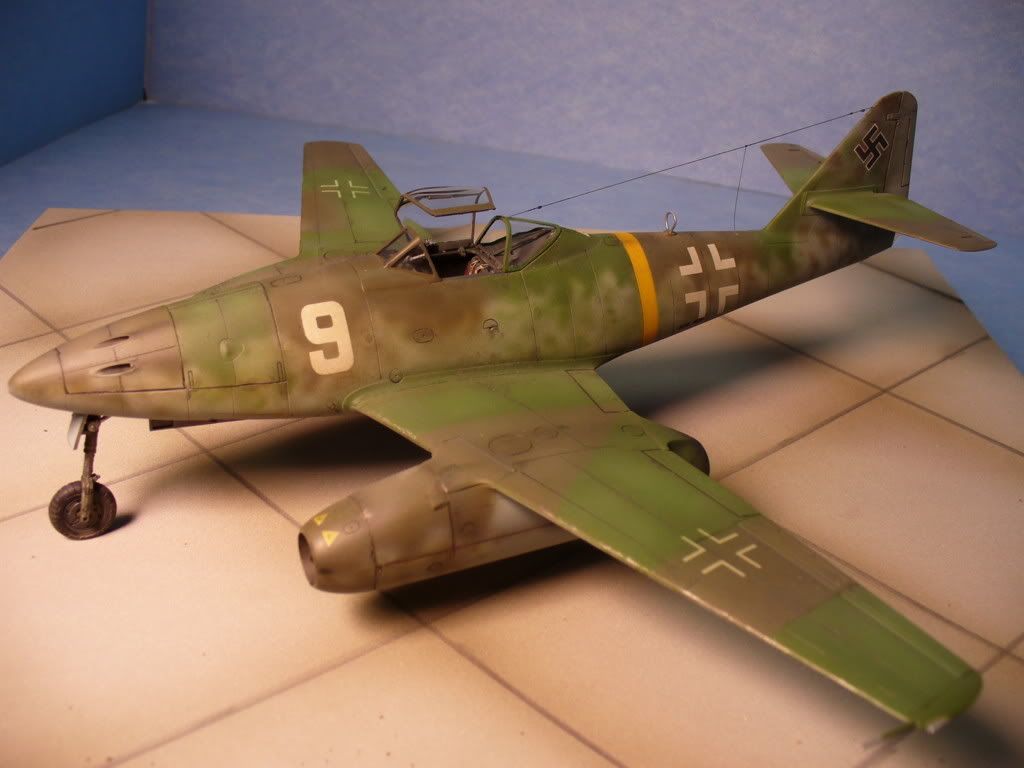One of my fathers friends was a waist gunner in a bomber one of things he has told me for years is the me262 was a supersonic aircraft. he said at times you could hear them comming at you and other times mostly in a dive through pass you couldn’t. He also mentioned talking to P-51 escort pilots about this and they said that there P-51 at full throttle in a power still could not catch one, infact one pilot indcated that he gave chase to one and seen an speed of over close to 500 mph and the 262 was out of his sight in a few seconds. The pilots in general through that at altitude the 262 was about half again as fast as there P-51’s.
Now what made me start looking into this was I got a chance to talk to an 8th airforce P-51 pilot about a mont ago. what he said was very interesting. I asked him out of all the german fighters which one was the hardest to dogfight. His answer was it depended who was flying it, but he really hated the me262’s. His exact words were those sob’s could climb like a rocket and would come through the bomber formations supersonic. My next question was what made you think they were going that fast. His answer was as they would come diving in you could see the smoke trails from there jets then you would see a white vapor come over the nose and off the wings in a cone at that point the smoke stopped.
German 262 pilots (5 of them actually) made reports that in steep high altitude dives the me262 would shake, they would loose control, the airspeeed indcator would read funny or 0, then things would smoothen out and they would regain control. It was very hard to pull out of the dive but when they did the samething would happen. The pilots though this was an flaw in the aircraft becasue at the time it was not known that this is the effect of supersonic flight.
Finally on page 13 of an american pilots handbook on how to fly the me262 issued by the air materiel command at Wright Field Ohio where it was tested tells the test pilots how to fly the 262 “through the sound barrier” this was written in 1946.
These stories coupled with reports of bomber personal hearing boom’s when attacked by 262’s seems to indicate that if they were not going supersonic then they were in very high transonic fight to me.
I always read that the 262 was a subsonic aircraft due to poor engines, not set up to go supersonic, incorrect wing sweep to stop compressability and that messerschmitt himself said it could only go mach .86 before loosing control. But willy did not have any knowledge of transonic or supersonic flight at the time. From what I am reading now with the knowledge we have of supersonic flight that it was possible for a 262 at high alt in the correct weather conditions(not sure what this has to do with it yet?), in a steep 60 degree dive to reach a speed to mach 1.05. If I am understanding this correctly the 262 has to quickly transistion to supersonic easing it in will not work.
At the end of one of the reports read this “The US had no interest in emphasizing any german achievements made during the war so this was covered up. How else are these german pilots describing supersonic fight a full 2 years before yaeger? not to mention when yaeger did break the sound barrier it was kept top seceret untill the 1950’s.”
Alot of info I know, just wanted to see what you all thought of this as I know very little about supersonic fight myself so I can not tell if this is based in fact or if the guys writing this just blowing smoke. I have read both the 262 pilot reports and later interviews with them. I have also herd stories (there are alot of them) of allied airmen encounters with 262’s. What I have not read is the american 262 pilot hand book, still looking for a copy of this.
Anyway all the research about the 262 made me build this bird. This is a 1/48 Tamiya me262. This kit is very good, I had a photo etch set but used very little of it. The fit of it was so good in fact that I actually created gaps in some places to simulate late war german poor fitting panels. I build this for myself more as a conversation piece than anything else. I didn’t go wild on it. The model depects white 9 flown by Guido Mutke on sept, 4 1945. Mutke claims to have gone supersonic in this me262. I have only one fuzzy pic so I did alot of good old guessing as to what it looked like. I did not highlight the fuselage panels lines too much becasue these were filled and hard to see on the actual 262, but access panels and engines work panels were poor fitting and open often due to short engine life and hard use so they got the works. I also noticed scorching on the rear of the engins outlets in some pics and simulated this as well. Finally I opted to keep all the panels closed to show off the exterior lines. After I took the pics I noticed some flaws so I will be making some adjustments so to speak. I will also be adding a base, when this is done I will post a few more pics. Let me know what you think.

